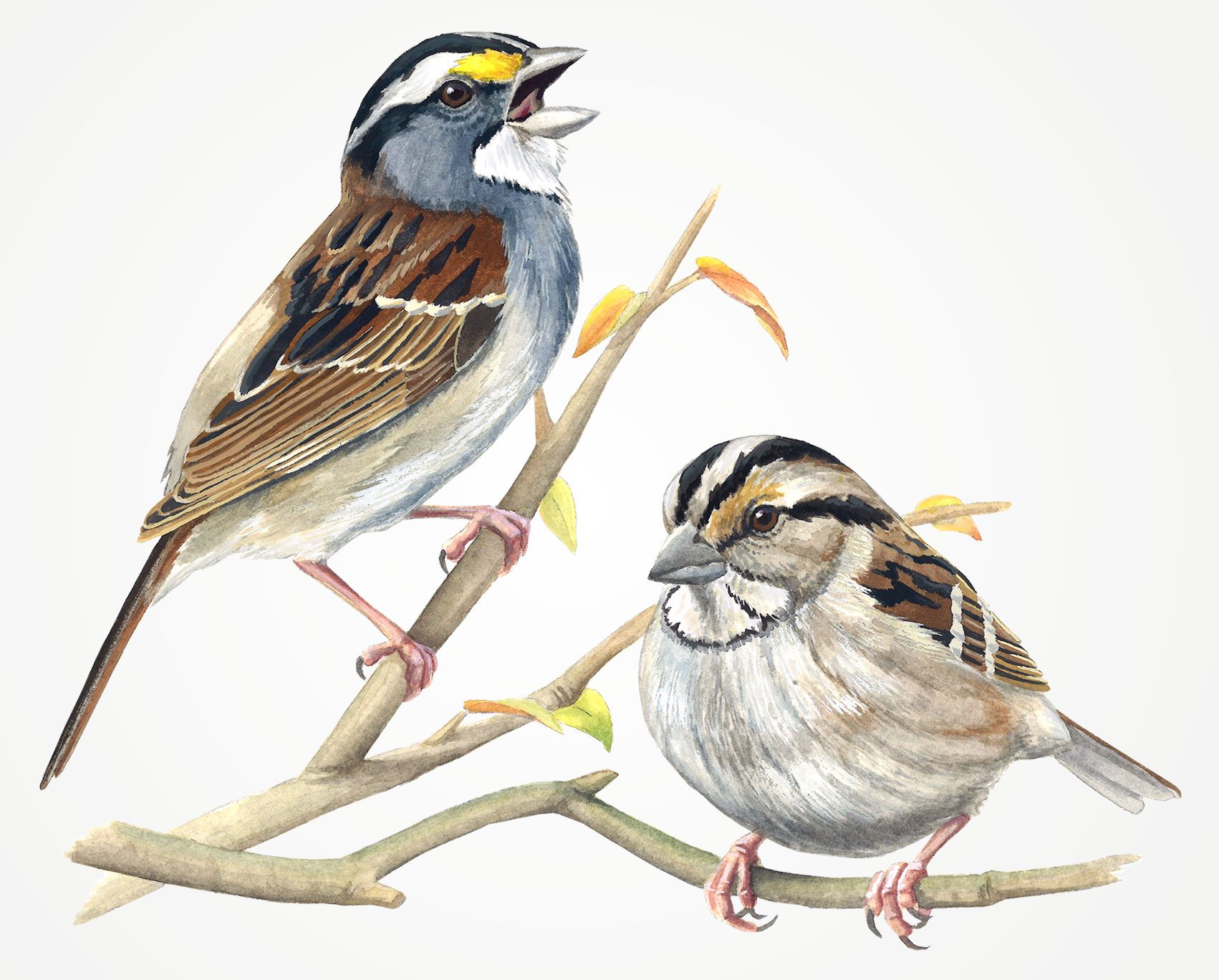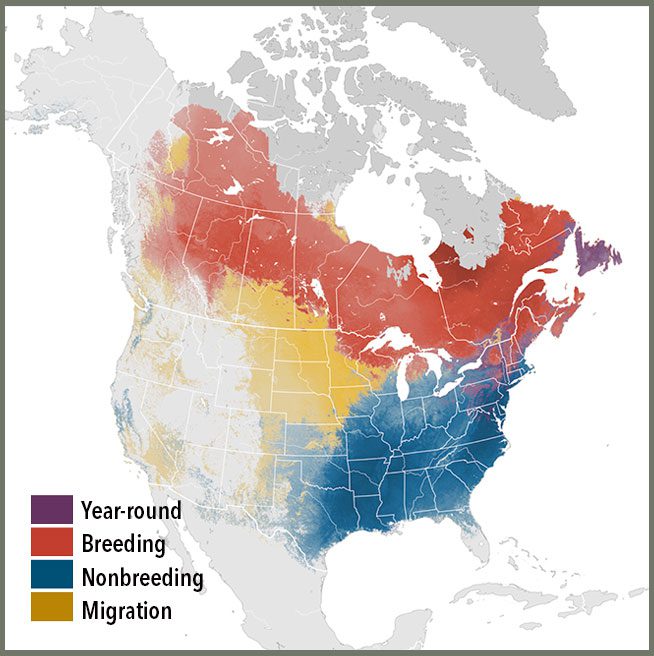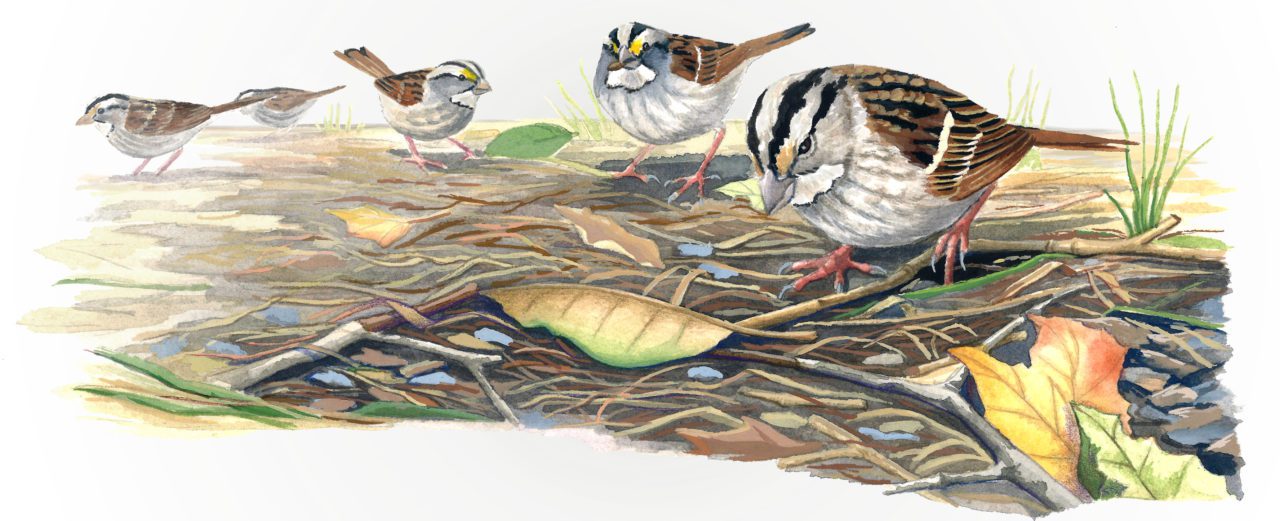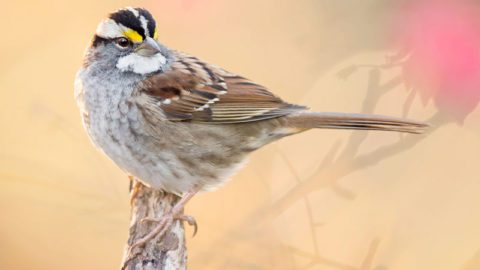Bird Profile: White-throated Sparrow
From All About Birds; Illustrations by Jessica French
September 17, 2020From the Autumn 2020 issue of Living Bird magazine. Subscribe now.
White-throated Sparrows are a hopping, flying anatomy lesson, with crisp facial markings such as a black eyestripe, white crown, white supercilium (eyebrow stripe), yellow lores (feathers in front of the eye), and white throat bordered by a black whisker (or malar stripe). They also offer a great entry-level lesson for new birders learning bird songs, with their easy-to-recognize wavering whistle of Old Sam Peabody-Peabody-Peabody (though that song may be changing).
White-throated Sparrows actually come in two color forms, or morphs—white-striped and tan-striped—that are genetically determined. This dimorphism is maintained because the two color forms are constantly intermingling for mating. While males of both color types prefer to mate with females with white stripes, both kinds of females prefer tan-striped males. The two color morphs show differences in other behaviors, too. White-throated Sparrows with white stripes are more aggressive than their tan-striped counterparts.

Find This Bird
Look for White-throated Sparrows on the ground in woods, brushy edges, and under your bird feeder. In fall and winter, these birds often form large flocks. They may make themselves easy to find in spring by frequently singing their recognizable whistled song.
Behavior
White-throated Sparrows often forage on the ground, using both feet to scratch forward and backward in a series of double-kicks, then pouncing on any food they’ve uncovered, such as a seed or a bug. A large migratory flock of White-throated Sparrows can create a rustling murmur in the autumn woods as the birds double-kick and scratch at the leaf litter.
Year-Round Abundance

In summer, White-throated Sparrows breed in the boreal forest across Canada, the northeastern U.S., and the Great Lakes. In autumn, the continental population of more than 160 million sweeps south in a migratory path mostly east of the Rockies, with some subpopulations traveling along the Intermountain Region and West Coast. Their wintering range is almost entirely within the United States, with the densest concentrations in the Mid-Atlantic states, the Carolinas, and the south-central U.S.
Population Trends
White-throated Sparrows are still abundant, but approximately one out of every three birds has disappeared since 1970, according to a 2019 Science study. Building collisions are one identified cause of mortality. These sparrows migrate at night, and they can be lured into deadly impacts with tall, lighted structures such as communications towers and buildings in urban areas. White-throated Sparrows are among the top bird species documented as window/building kills by Toronto’s Fatal Light Awareness Program and similar volunteer efforts in other major cities.

All About Birds
is a free resource
Available for everyone,
funded by donors like you
American Kestrel by Blair Dudeck / Macaulay Library



